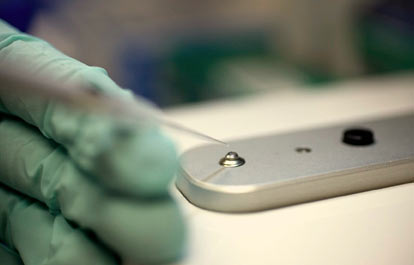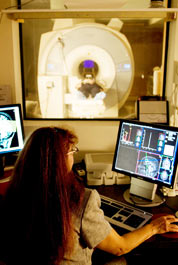

Scientific Lectures //
Mapping the human connectome using magnetoencephalography
Matthew Brookes, Ph.D. - Leverhulme Trust Early Career Fellow, Faculty of Science, The School of Physics and Astronomy, The University of Nottingham.
Presented: October 18, 2012
ABSTRACT: Brain connectivity has been widely reported in studies employing fMRI. Such studies have elucidated the spatial structure and function of a number of previously uncharacterised brain networks. However, the latency and longevity of haemodynamic responses mean that neither the electrophysiological basis nor the most rapid temporal dynamics of brain network connectivity can be measured using fMRI alone. Magnetoencephalography (MEG) offers a means to bypass haemodynamic responses and measure directly the electrical effects underlying connectivity. However whilst potentially advantageous, MEG measurements are complicated by a number of technical limitations brought about by the ill posed MEG inverse problem (reconstructing brain space voxels using magnetic field data collected above the scalp).
In this talk I will present recent work in which we employ MEG to the study large scale distributed resting state networks in the human brain. I will review several approaches to measuring long range connectivity including seed based correlation, independent component analysis and other related multi-variate techniques. In particular I will show how to address some of the limitations associated with source space signal ‘leakage’ between voxels. I will show our recent data which imply that many of the well-known resting state networks previously characterised in fMRI, can also be observed in MEG data. In the final stages of the talk, I will move from the resting state to review similar methodologies applied to task positive data. I will present data acquired in healthy volunteers during working memory paradigms, which show how network wide oscillations are perturbed by cognitive tasks; in addition I will show pilot data recorded during similar tasks in patients with schizophrenia.
To view presentation please click here.

